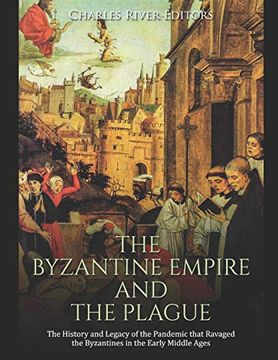The Byzantine Empire and the Plague: The History and Legacy of the Pandemic That Ravaged the Byzantines in the Early Middle Ages (in English)
Synopsis "The Byzantine Empire and the Plague: The History and Legacy of the Pandemic That Ravaged the Byzantines in the Early Middle Ages (in English)"
*Includes pictures*Includes excerpts of medieval accounts*Includes a bibliography for further reading“[Theodore] made very large pits, inside each of which 70,000 corpses were laid down. He thus appointed men there, who brought down corpses, sorted them and piled them up. They pressed them in rows on top of each other, in the same way as someone presses hay in a loft ... Men and women were trodden down, and in the little space between them the young and infants were pressed down, trodden with the feet and trampled down like spoilt grapes.” - John of Ephesus The Bubonic Plague was the worst affliction ever visited upon Europe and the Mediterranean world. Within a few short years, a quarter of the population was taken after a short but torturous illness. Those who escaped faced famine and economic hardship, crops were left unsown; harvests spoiled for lack of harvesters, and villages, towns, and great cities were depopulated. Markets were destroyed, and trade ground to a halt. It must have seemed like the end of the world to the terrified populace. The horror abated, only to return years later, often with less virulence but no less misery.Many who read a description of that plague might immediately think of the Black Death, the great epidemic that ravaged Europe and the Middle East from 1347-1351, but it actually refers to the lesser-known but arguably worse Plague of Justinian that descended upon the Mediterranean world in 541 and continued to decimate it over the next 200 years. The effects of the pestilence on history was every bit as dramatic as the one in the Late Middle Ages. In fact, the case could be made that the Plague of Justinian was a major factor in the molding of Europe and, consequently, the rest of the world as it is known today, marking a monumental crossroad between the ancient and medieval worlds. It might also be asked why so little is known about the Plague of Justinian and the epidemics following it, which stands in stark contrast with the Black Death, which has been the subject of numerous books and papers. The explanation, at least in part, is probably cultural. The 300 years between the fall of the Western Roman Empire and its revival by the Franks has long been referred to as the Dark Ages, negatively comparing the cultural enlightenment of the Roman Empire with the supposed barbarity of the Germanic kingdoms that replaced it. This was popularized by the Romantic Movement in the 19th century and was premised on the belief that Western Civilization was superior. In doing so, Western Europeans ignored the rich cultural traditions of the Byzantine Empire and Persia and overlooked that the Germanic peoples actually preserved some elements of Roman civilization. Moreover, tribes converting to Christianity embraced the Catholic Church and thus Roman culture. Contrary to popular opinion, learning did not decline during this time in the West because monasticism brought schools, libraries, and institutes of higher learning throughout Western Europe. The Byzantine Empire and the Plague: The History and Legacy of the Pandemic that Ravaged the Byzantines in the Early Middle Ages charts the history of the pestilence over the course of two centuries and how it shaped subsequent events, bringing down nations while inadvertently lifting others. It also describes the diseases’ victims, and how certain segments of society may have avoided contracting it. Along with pictures depicting important people, places, and events, you will learn about the Byzantine Empire and the plague like never before.

